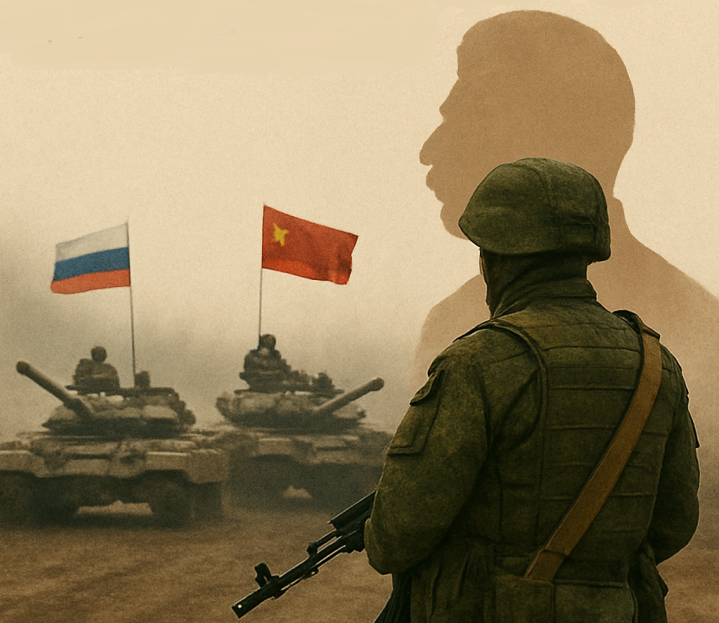When Russia launched its full-scale invasion of Ukraine in February 2022, its strategic objectives were sweeping and unmistakable. The Kremlin aimed not only to seize Ukraine but also to reimpose domination over the former Soviet space, effectively constructing what many in Moscow openly described as a “USSR 2.0.” Russia’s ambition was not merely territorial expansion but the resurrection of an imperial sphere that could once again rival the West. Moscow envisioned itself as a reborn empire, capable of dictating terms to Kyiv, intimidating Eastern Europe, and reshaping the global order.
Yet history rarely unfolds according to the plans of authoritarian rulers. What Russia did not anticipate was the depth of Ukrainian resistance. For the first time since Chechnya, Moscow faced a nation willing to fight back with determination, ingenuity, and solidarity. Despite being unable to fully expel Russian forces, Ukraine has liberated large swathes of occupied territory. Even though about 20 per cent of its land remains under occupation, the Kremlin has failed to achieve any of its declared strategic goals. Instead, Russia has been dragged into what can only be described as the Ukrainian quagmire.
The war has left Russia strategically weaker on multiple fronts, such as Syria and more. Its forces have suffered staggering losses, its defence industries are under unprecedented strain, and its ability to project power abroad has sharply declined. Moscow, which once claimed to influence events from Africa to Latin America, is now dependent on Iranian technology and North Korean soldiers. The self-proclaimed great power has been reduced to pleading for matériel from sanctioned pariah states. In parallel, Russia has been expelled from the democratic world, its financial assets frozen, and its diplomatic voice diminished. What did the Kremlin gain in return? Merely partial control over a few oblasts in Donbas, territory seized at the cost of enormous blood and treasure.
The question naturally arises: does Russia not see that it is losing? Does the Kremlin not recognise that prolonging this war only deepens its defeat?
It is crystal clear that the answer lies partly in miscalculation. Russia did not expect such resistance from Ukraine, nor such unity from the West. Yet recent rhetoric from Russian officials, propagandists, and state-aligned journalists reveals another dimension: Moscow has either had, or quickly developed, a “Plan B,” in the wake of failure in Ukraine. This alternative strategy seeks to transform defeat into leverage through a manoeuvre borrowed from Stalin’s playbook before World War II.
To understand this, one must recall Stalin’s opportunism on the eve of that war. In the late 1930s, the Soviet Union was isolated by the democratic West. Nazi Germany’s rise presented Stalin with a chance. Through the Molotov–Ribbentrop Pact of 1939, Moscow struck a temporary alliance with Berlin, carving up Poland and buying time. When Germany invaded Poland in September, the USSR delayed its own attack by a week under the pretext of conflict with Japan, allowing Warsaw to fall to Hitler. With the West now at war with Germany, Stalin manoeuvred the USSR into an indispensable position. By the war’s end, despite being a dictatorship devoid of freedoms, the Soviet Union was recognised as one of two superpowers. Its status lasted barely four decades before the Soviet system collapsed under the weight of its corruption and backwardness.
Today, Russia appears to be attempting a similar manoeuvre. Confronted with isolation, Moscow imagines that tensions between China and the West will present an opportunity. Just as Stalin used Nazi Germany as leverage, Putin believes he can exploit Beijing’s rivalry with Washington to force the democratic world to tolerate Russian gains in Ukraine. The Kremlin’s calculus seems to be that by presenting itself as a potential “counterweight” to China, it can compel the West to accept Russia as a partner again—even at the cost of Ukraine’s sovereignty, like once Finland’s sovereignty.
This strategy is deeply flawed. Unlike Nazi Germany in the 1930s, China is not a revanchist power seeking territorial conquest across Europe. China has historically been a great civilisation with little tradition of overseas imperialism. Its current strategy of expansion is not based on tanks and artillery but on technology, infrastructure, and investment. Where Russia brings war, China brings markets, finance, and digital platforms. Beijing’s “influence” arrives through construction projects and trade, not bombed-out cities and occupation regimes.
Moreover, the West does not view China as an existential enemy in the way it once viewed the Soviet Union or Nazi Germany. It sees Beijing as a competitor, even a rival, but one with whom cooperation remains possible. The parallel with Japan in the 1980s is instructive. At that time, Japan’s rise in technology and finance was described in alarmist tones. Yet three decades later, Japan is a trusted partner, its “threat” long forgotten. Likewise, in twenty or thirty years, the West will likely find accommodation with China, just as it once did with Japan. Russia, on the other hand, will not be “invited back in” as a legitimate power if it continues its aggression. The democratic world has already paid the price of tolerating Moscow once. It will not willingly enable the emergence of a new despotism led by a bloodstained autocrat.
In reality, Russia has no viable Plan B. Its only path to survival lies in abandoning the logic of conquest and embracing a politics based on respect, cooperation, and mutual development with its neighbours. Anything else will simply extend its decline. If Moscow continues to pursue illusions of grandeur through violence, the outcome is already written: in thirty or forty years, like in the 1990s, the world will once again see Russia revealed for what it is—a poor, broken state, unable to escape the consequences of its own despotic misrule.

